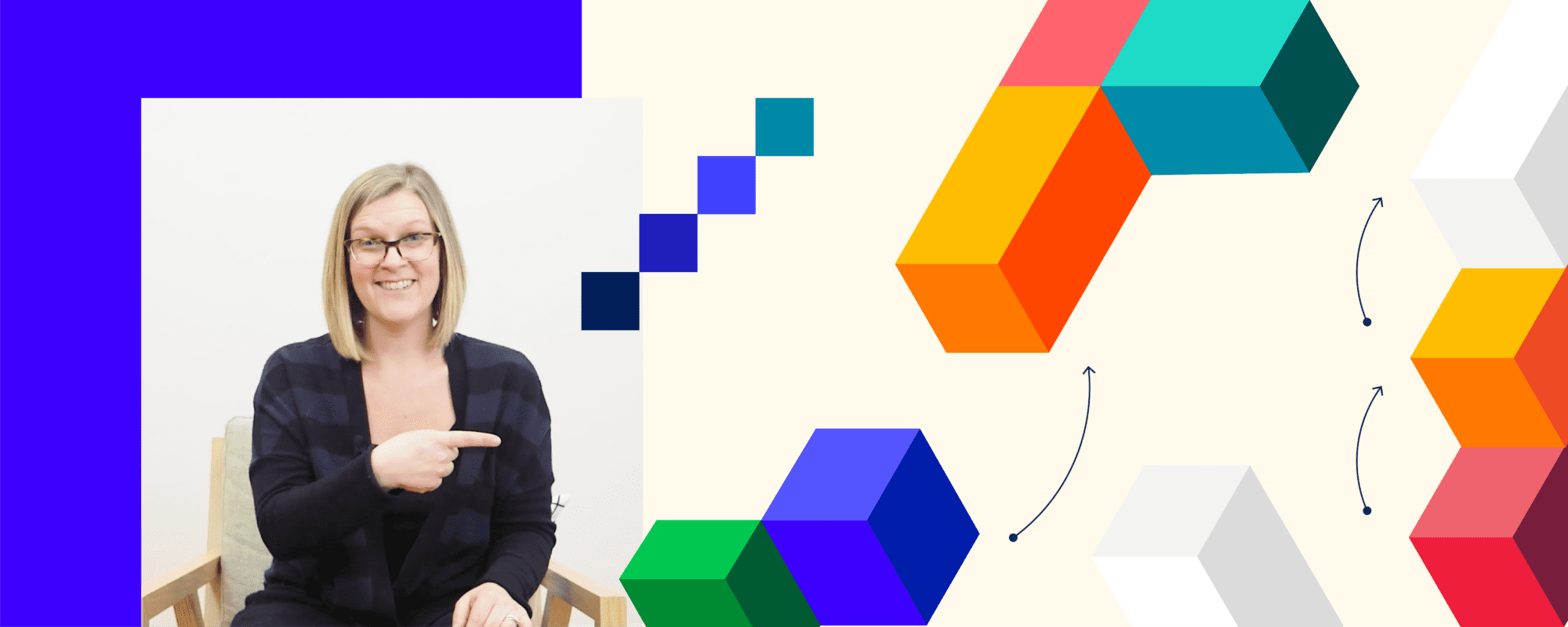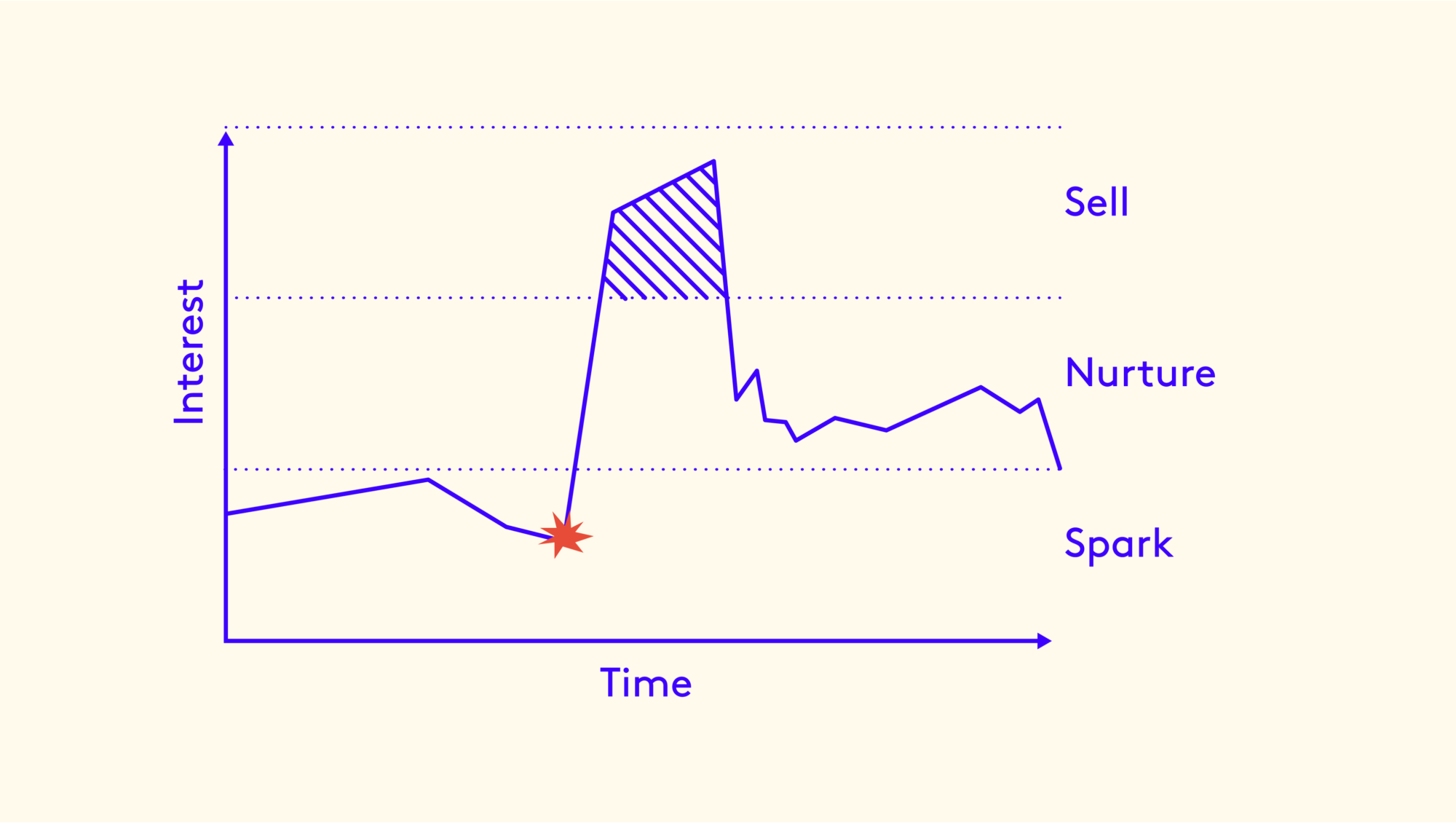
The typical buyer’s journey isn’t straightforward. It’s spiky. It’s unpredictable. It’s messy. It’s omnichannel. And as marketers, we have very little control over it.
Getting context for this is easy since we’ve all bought something important before. Think back to the last big purchase you made in your life, such as a car or a house. Chances are, you consumed a lot of information first in order to feel confident about spending your hard-earned money. On your terms – not on the schedule of your real estate agent or car dealership.
Your B2B buyers are no different. Unfortunately, the way that B2B marketing is structured today doesn’t respond very well to this process.
The good news is that there’s a better way and it will transform the way you think about demand generation and content marketing. It’s called Content Activation and it’s game-changing.
The chaotic B2B buyer’s journey
Your buyers need to consume a large volume of information to become truly educated and qualified to make purchase decisions. This tends to happen in cyclical stages:
- The spark: The spark piques their interest about your solution. It could be anything–a piece of content, a blog post, a conference. Once their interest is sparked, they’ll start to consume information.
- The seek: If they’re really engaged buyers – the ones who are actually trying to solve a problem or answer a question – they’re going to seek additional information. They Google around on the hunt for more information. They ask peers. They end up on your website, and try to find all of the relevant pieces of content that help them feel well-educated and qualified.
- The binge: Now what happens is the magical thing that we’re all looking for. We call it content bingeing. The key to getting prospects to binge is to deliver enough relevant content to them in one session. To enable the binge you have to remove any obstacles (like forms) and make it really easy to serve up all of that content when they need it.
But unfortunately, this is not often how it works in B2B marketing. Once we’ve lit that spark, and given them that great piece of content, buyers typically experience:
- The wall: If the next best piece of content isn’t easy for buyers to find, you risk losing your prospects’ attention (or letting them get distracted by cat videos). And that’s not a great experience for them, especially if they’re an engaged buyer who’s hungry for more information. They’re trying to become educated after all.
- The decay: When your buyer runs into the wall, their interest starts to decay. They’ll only feel frustration for so long before they say: “You know what? Maybe I’ll come back later and try looking for this information another time.”
After that, you can only hope and pray they come back and catch that spark once more.

The passive content experience
The reason buyers hit a wall and lose interest is because of passive content experiences. We create all this great content and then scatter it around across various channels. We hope that somehow our buyers will find and consume enough of that information to become truly educated and qualified.
But they don’t necessarily know what information they need to consume, and they certainly don’t know where it all lives. So, why do we take such a passive approach? Think about it: as a buyer, would you be so motivated that you’d kick down walls and move mountains to find all this information and consume it?
Of course, you wouldn’t. And neither will your buyers.
5 negative outcomes of passive content
Taking a passive approach to content delivery has consequences:
- Longer sales cycles. When we stretch out the buyer’s journey and make it hard for people to find and consume the information they need, it takes them a lot longer to become qualified, educated buyers.
- Missed opportunities. If you can’t figure out who’s truly engaged and consuming your content, it’s hard to zero in on your best prospects.
- Frustrated buyers. Who wants to have an experience where they’re running into walls? When we make it really difficult for our buyers to find the information they need, they might get frustrated and walk away (or, worse, go to one of our competitors).
- Flatlining metrics. If you’re running lots of programs through lots of channels, and not seeing better results, it might be time to rethink how you’re trying to educate and deliver content to your buyers.
- Underutilized content assets. We’ve all been creating so much great content, but we have so much of it sitting on the shelf. There’s a better way to connect your buyers with more of the information that they need.
If you’re noticing any of the above, passive content is probably to blame.
Content activation is the exact opposite of all that.
Content Activation: A definition

It removes those walls and obstacles, making it much easier for them to self-educate. It helps you spot your most engaged buyers, so you can take action and deliver them to sales. It smoothes out all the friction from the buying process, so your buyers can become truly deeply educated and qualified much faster. And it helps your metrics get better all the time.
By creating a better, more qualified, educated buyer, you’re going to inevitably see better return from all of your marketing.
The key to Content Activation is making every click the start of a journey, instead of the end. Rather than giving prospects a one-off content experience, take them to highly prescriptive content tracks that allow them to move through more of the information they need in the moments when you have their attention.
What Content Activation is not
Activating your content allows you to remove any friction in the buyer’s journey. Those points of friction can include:
- Landing pages
- Form proliferation
- Hard stops (when there isn’t a next best asset offered for consumption)
- Blind downloads (where you have no idea how much time people are spending with your content)
The result of Content Activation
The coolest result of content activation is that it allows you to generate and identify what we call Engaged Intent. Engaged Intent is really special. It gives you the leading indicator of sales readiness.
Engaged Intent is your best buying signal.
It tells you where your buyers are in this journey. It gives you insight into how much time they’re spending with your content. It indicates what their appetite is for more information. And by responding to that data, you can advance them in their buyer’s journey.
Marketers have a choice: You can deliver content the passive way; sprinkle your content around, hope your buyers find it, and stretch out your sales cycles…
…or you can activate your content. Connect your buyers with more of the information they need when they need it. Accelerate them through the buying process. Remove obstacles, making it easy for them to access what they need. Deliver a delightful user experience. And know when your buyers are truly engaged.
I’ve been doing demand generation for a long time, and this is big. This is what content marketing is all about and what marketing automation was supposed to deliver. Content Activation is something we’re really passionate and excited about here at PathFactory and, after reading this, I hope you are too.
